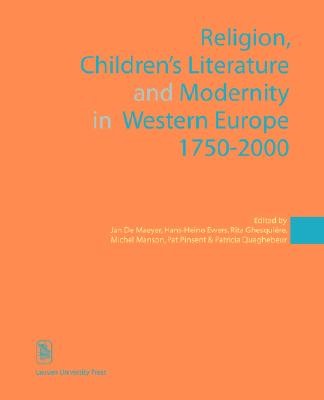
- We will send in 10–14 business days.
- Publisher: Leuven University Press
- Year: 2007
- Pages: 536
- ISBN-10: 9058674975
- ISBN-13: 9789058674975
- Format: 17 x 22.6 x 3.6 cm, minkšti viršeliai
- Language: English
- SAVE -10% with code: EXTRA
Religion, Children's Literature, and Modernity in Western Europe 1750-2000 (e-book) (used book) | bookbook.eu
Reviews
Description
In this book some 25 scholars focus on the relationship between religion, children's literature and modernity in Western Europe since the Enlightenment (c. 1750). They examine various aspects of the phenomenon of children's literature, such as types of texts, age of readers, position of authors, design and illustration. The role of religion in giving meaning both in a substantive sense as well as through the institutionalised churches is studied from an interdenominational point of view (Judaism, Roman Catholicism, Protestantism and Anglicanism). Finally, the contribution of pedagogy and child psychology in the interaction between modernity, religion and children's literature is also discussed.Various articles give a broad overview of the tensions between aesthetics and ethics and the demand for cultural autonomy in the development of children's literature. Children's bibles and missionary stories played an important part in the growing diversification of children's literature, as did the publication of illustrated reviews for children. Remarkable differences are highlighted in the involvement of religious societies and institutions, episcopally approved publishing houses and supervisory bodies in the publication, distribution and supervision of children's literature. This volume adopts a comparative approach in exploring the underlying religious, ideological and cultural dimensions of children's literature in modern society.)
EXTRA 10 % discount with code: EXTRA
The promotion ends in 21d.04:33:57
The discount code is valid when purchasing from 10 €. Discounts do not stack.
- Publisher: Leuven University Press
- Year: 2007
- Pages: 536
- ISBN-10: 9058674975
- ISBN-13: 9789058674975
- Format: 17 x 22.6 x 3.6 cm, minkšti viršeliai
- Language: English English
In this book some 25 scholars focus on the relationship between religion, children's literature and modernity in Western Europe since the Enlightenment (c. 1750). They examine various aspects of the phenomenon of children's literature, such as types of texts, age of readers, position of authors, design and illustration. The role of religion in giving meaning both in a substantive sense as well as through the institutionalised churches is studied from an interdenominational point of view (Judaism, Roman Catholicism, Protestantism and Anglicanism). Finally, the contribution of pedagogy and child psychology in the interaction between modernity, religion and children's literature is also discussed.Various articles give a broad overview of the tensions between aesthetics and ethics and the demand for cultural autonomy in the development of children's literature. Children's bibles and missionary stories played an important part in the growing diversification of children's literature, as did the publication of illustrated reviews for children. Remarkable differences are highlighted in the involvement of religious societies and institutions, episcopally approved publishing houses and supervisory bodies in the publication, distribution and supervision of children's literature. This volume adopts a comparative approach in exploring the underlying religious, ideological and cultural dimensions of children's literature in modern society.)


Reviews